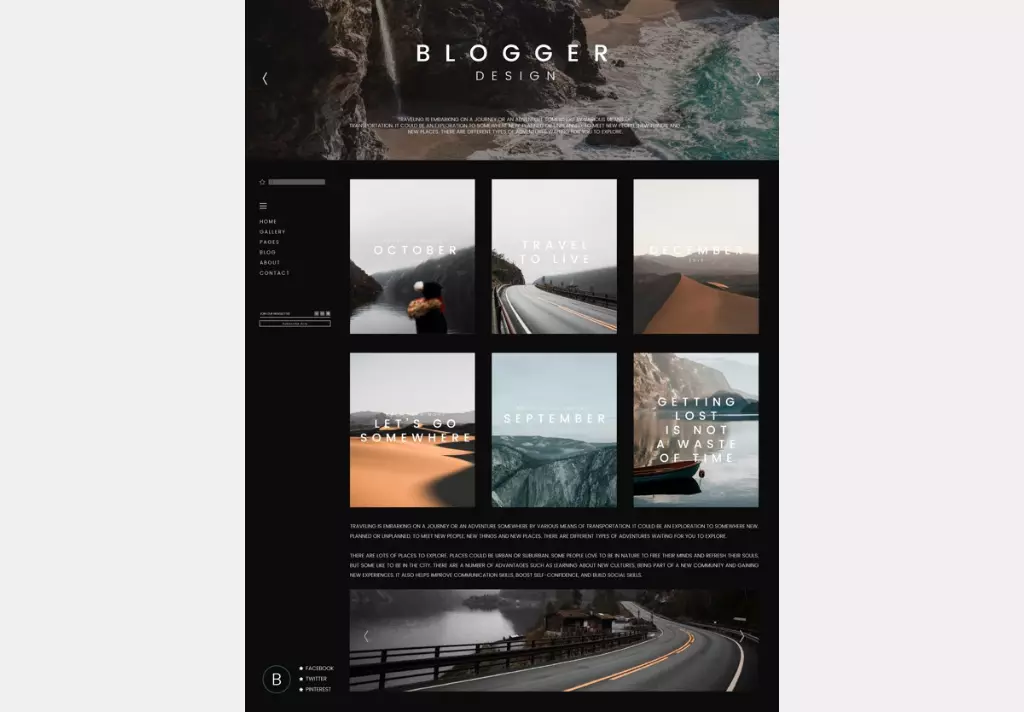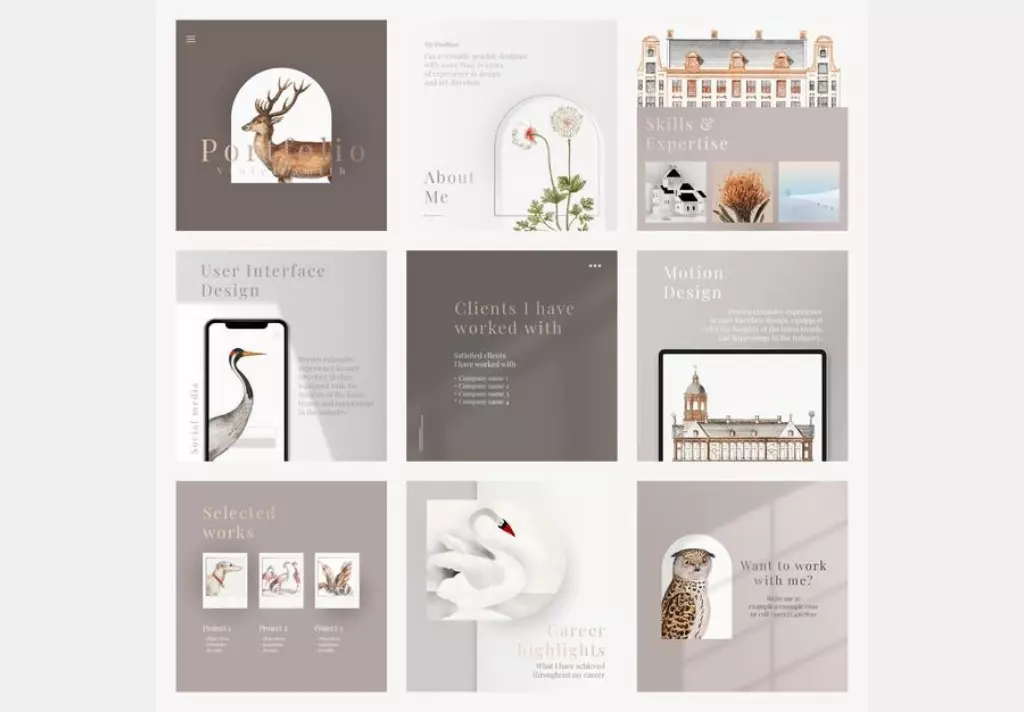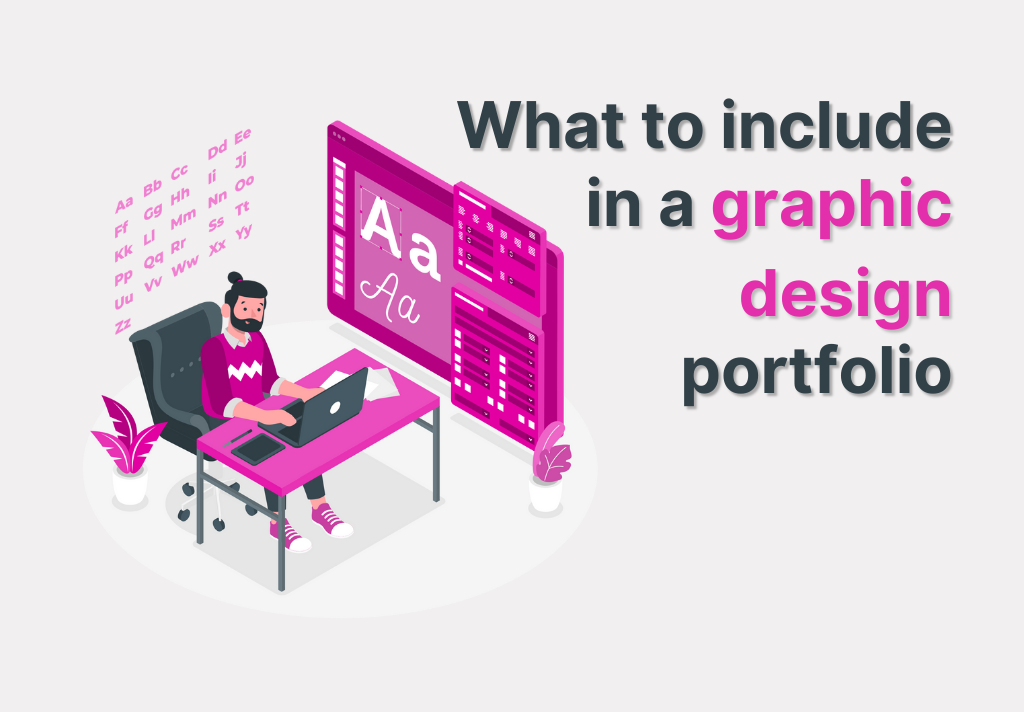If you’re starting out in your career, your portfolio may be brief. Don’t have visitors sift through dozens of designs to discover the best ones.
When a client is looking for a graphic designer, a portfolio is usually the only thing they look at, thus having one is essential for demonstrating your abilities.
A graphic design portfolio, like a resume, includes essential contact information as well as any case studies you want to add from previous companies.
If you’re starting out in your career, your portfolio may be brief. Don’t have visitors sift through dozens of designs to discover the best ones. Every sample doesn’t have to be paid for. Feel free to include self-initiated projects.
Having an understanding of what to include and what to leave out can help you push your portfolio to the front of the ever-growing crowd. Here’s how to create a stunning graphic design portfolio that will impress your clients.
There’s always a difference of opinion on what should go in there, whether you’re a newcomer to the sector or a seasoned professional.
What is a graphic design portfolio
A graphic design portfolio is a visual representation of what you’ve done so far, as well as what you want to do in the future. It would be best if you stood out in a crowded marketplace. A clear understanding of what to include and what to exclude can help you push your portfolio to the head of the line.
How to create a portfolio as a graphic design
- Curate your most outstanding work and demonstrate a wide range of abilities.
- Select the best platform for displaying your work.
- Consider including a professional case study or client testimonials.
- Integrate your character.
- Describe how you come up with ideas.
- Showcase work that isn’t for a client or side projects.
what to include in a graphic design portfolio
1. Be aware that what you include in your portfolio will determine what you are hired for.
Understanding how your prospects and clients think can help you land new projects that you’re passionate about. Consider this when putting together the parts of your graphic design portfolio.
What you put in your portfolio is what you’ll get hired for, so make sure it’s the stuff you want to do.
At the end of the day, what counts is that you have something to call your niche.
For instance, if you wanted to concentrate on branding initiatives, a concentration on logos and identity would be more advantageous than a collection of websites, packaging, and identification. Having a niche and specialization increases your chances of being hired significantly.
2. It’s All About the Trifecta
When selecting whether or not to engage a graphic designer, some designers believe in a trifecta of must-haves. As a result, it’s a good idea to include these three elements in your overall graphic design portfolio.
We want to see the trifecta when we’re looking at a possible design candidate: their website, portfolio, and Instagram.
Make your work stand out by presenting it uniquely.
When analyzing a large number of portfolios at once, they can start to blur together. You want to surprise them and stand out from the crowd. You can do this with original mockups and distinctive layouts; make sure they’re as accurate as possible, or create your own. Seeing the exact generic mockups over and over can diminish the value of your effort. Think outside the box; displaying your work in its natural setting tells a story and demonstrates proof of concept.
Always tailor your portfolio to the person who will be receiving it, and keep in mind that people have short attention spans.
Put your best and most relevant work first, and try to match your portfolio to the job you’re applying for. It is unnecessary to showcase all of your previous work; you should include only your best work.
Produce some masterpieces.
We can generate conceptual work and projects for little to no cost as designers, so make some if you don’t have any projects that correlate with a position you’re interested in. This demonstrates that you’re willing to put in long hours to get better employment and prospects.
3. Consider your graphic design portfolio to be a resume and personalize it.
Here’s some advice that may come as a shock to you, especially if you’re a new designer: Your portfolio is very similar to your CV.
A Perfect Graphics points out that including a letter of introduction with your portfolio allows him to be more personable with prospects and clients.
Start with a letter of introduction to a possible job.
For example, I am talking about studying masters like Da Vinci and Michelangelo and my parents’ forbearance. At the same time, I built a rickety scaffold in my bedroom to paint a fresco on the ceiling. Also, list important achievements. I’d like folks to feel like they know a little ABOUT, so be open and honest.
When it comes to displaying the work, attempt to promote yourself or your company in the most professional manner possible. Try to include as many diverse styles and applications as possible in the examples. Try to stay away from showcasing stuff that is all the same. Instead, try to show as much variety as possible because you never know what someone will like or be looking for.
4. Know what you’re good at and how to communicate it.
Prospective clients and clients looking at your graphic design portfolio are trying to find out your area of expertise.
After all, any designer might be a master of none and a jack of all trades. That’s why differentiation is so important.
As you develop your portfolio, it’s critical to understand the services or areas in which you specialize as a graphic designer. If you specialize in packaging design, displaying examples of work you’ve completed for customers is vital.
It’s also crucial to display a wide range of your graphic design work in its original form. Nowadays, many graphic designers have only ever seen their work on a computer screen. They have never seen it in its final form. If you have an opportunity to get samples of the final printed work, do so and include it in your portfolio.
Do not forget the importance of displaying your work in the manner in which your client and the general public will perceive it.
5. What do you think a graphic design portfolio should look like?
It’s a good idea to think of your design portfolio as more than just a collection of visuals to present potential clients. Consider the impact your portfolio has on them, as well as how the aspects of your portfolio influence the types of projects you win and the work you execute.
Also read: What is Adobe Behance [ Hard Truth ]
To that purpose, Elise Grinstead of Elisign Design suggests the following four points:
- Background
- Industry
- Audience Specification
- The Communication Problem/Challenge that was Solved
- The strategies employed in the design solution
- Applied media
Portfolio ideas
- Personal branding is the process of creating a unique identity for yourself
- Designing a logo and branding
- Representation
- Promotional Campaign
- Design of Packaging
- Collateral Printing
- Typographic Poster or Album Art
The graphic design portfolio examples



Importance of a good portfolio
Every graphic designer needs a portfolio, as does anyone working in the creative industry– no questions asked. A portfolio exposes your work to potential clients and demonstrates your originality. You’ll be able to create connections, position yourself in the market, and obtain results if you have a strong portfolio.
Conclusion
Design and writing are two very different disciplines but ultimately have the same goal: to communicate a message. Utilize both in order to complement and reinforce one another, effectively telling your story. The perfect combination of color and form within a composition will depict certain emotions or stories.
Once again, many thanks. Please check back next season for more updates based on your suggestions. 🙂

Hi, i’m Akash shaw creator of Adsvast agency , Hello, I am a perfectionist with deep love for aesthetics,
a graphics designer with expertise in logo design and branding.
My only goal with Notamartwork is try to help others to freelancers to get jobs and learn how to do freelancing.
